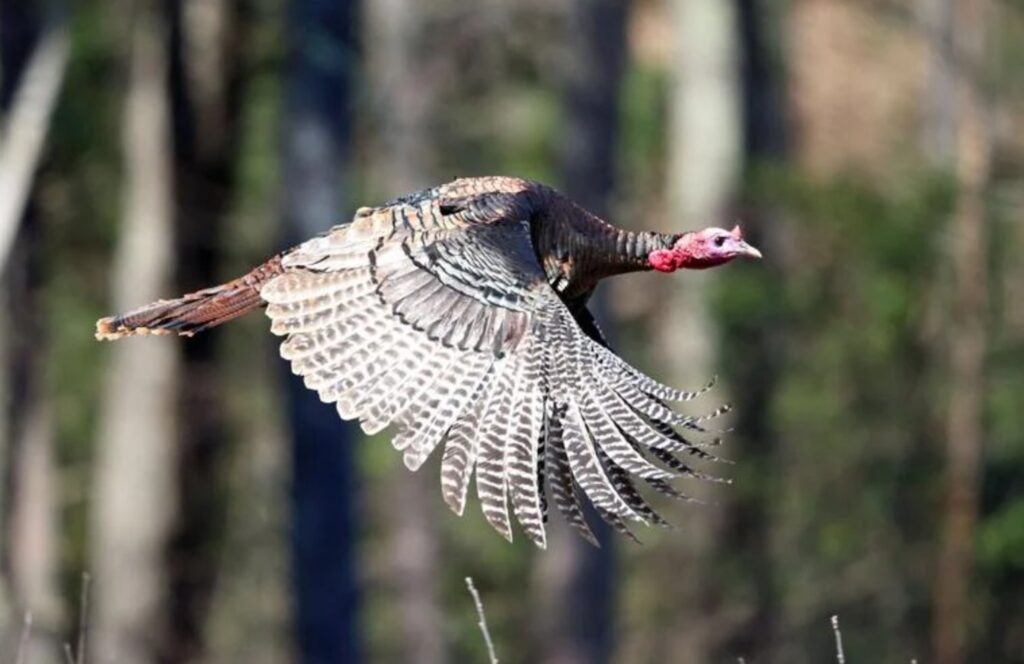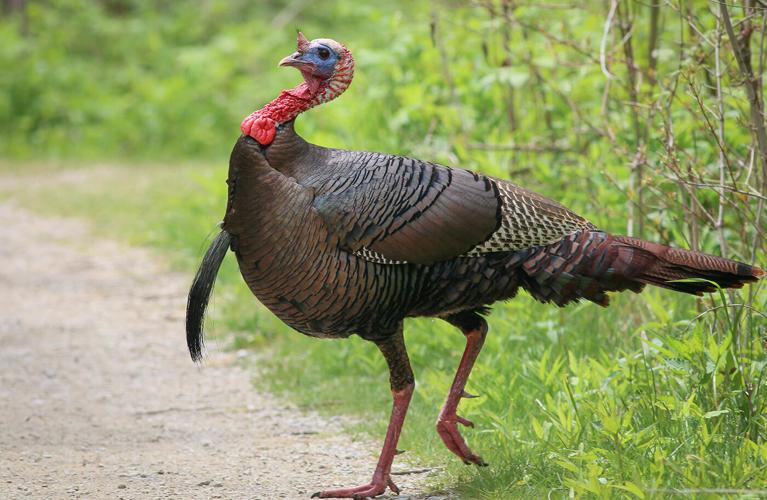The wild turkey has made an incredible comeback. Not that long ago, wild turkeys were all but wiped out by a combination of overhunting and habitat loss.
By the early 1900s, none remained in the District of Columbia and very few remained in the woods of Maryland, Virginia, New York, Delaware or Pennsylvania, to say nothing of the other 34 U.S. states that the birds were known to inhabit. They are thought to have vanished entirely in as many as 18 of those states.
Then, thanks to great restoration efforts by game commissions and hunting groups, wild turkeys were reintroduced into their former native range.
Early efforts to replenish populations with birds raised in captivity were largely unsuccessful. But “trap and transfer” programs begun in the 1940s—capturing wild birds and strategically relocating them—began to have the desired effect.
Turkeys are becoming increasingly more common. Plus, the land need not be that wild for them to survive. They’re found in not only suburban areas, but in major cities such as Washington, D.C. and New York.
According to the National Wild Turkey Federation, the species you’re most likely to see east of the Mississippi River is M. gallopavo sylvestris. Its subspecific name (sylvestris) refers to the bird’s preferred environs: forests.

Wild turkeys are the largest and heaviest game birds and the heaviest of all so-called land fowl (order Galliformes), which includes chickens, pheasants, quails, grouse and many other species.
Male eastern wild turkeys grow to about 40 inches tall and weigh 17–21 pounds, according to the Cornell Lab of Ornithology. Females are considerably smaller, typically about 30 inches tall and 8–11 pounds. The heaviest known wild turkey weighed 38 pounds, yet it was a lightweight compared with the Guinness world record domestic turkey, which weighed 86 pounds. That was also the most expensive turkey ever sold, at $4,400.
While domestic turkeys are ungainly and flightless—having been bred to be meatier and heavier—the wild turkeys they descend from can run up to 25 miles per hour and can fly at more than twice that speed. Still, with their plump bodies, long necks and showy, rounded tails, even the wild birds don’t look like they can move that quickly, nor are they easily mistaken for other game birds.
These birds also have some unusual features. The male, for instance, has an essentially naked face and a long, thin plume of hair-like feathers sprouting from its chest. Unlike other feathers, this “beard,” as it is known, is permanentnot replace. It won’t be replaced with new feathers during molts. The older the male, the longer the beard. A less prominent version of the beard occurs on about 20 percent of females, according to Cornell.
The male’s face can change color and has other interesting features, complete with interesting names. The flap of skin dangling from the bird’s neck is called a wattle or dewlap, as is its equivalent on a bovine. The sometimes reddish bumps on the male turkey’s neck and head are called caruncles, and the fleshy projection on top of its beak is called a snood.
In the absence of disease and predation, a wild turkey can live up to 15 years.
For most of the year, these nonmigratory birds tend to form same-sex flocks, though the hens are solitary when nesting in the spring. After mating (late March to early April in the Mid-Atlantic), the hen makes her nest on the ground, usually no more than a shallow depression in dead leaves, often next to a live or fallen tree. She lays 8–12 eggs that hatch roughly a month later.
During incubation, when the hen leaves the nest to feed, she kicks leaves onto the nest, to hide the eggs from raccoons and other predators. The young all hatch on the same day and can fly just two weeks later, which greatly increases their survivability, as all turkeys roost or sleep in trees to avoid predation.
It is great to know that conservation efforts and game regulations have increased the wild turkey numbers. As of 2023, the estimate for wild turkeys within the U.S. was 84.2 million, a robust enough number for the Cornell Lab to consider them a species of “least concern.” That’s not to say we can let our guard down. Even though hunting is well-regulated, habitat loss—courtesy of suburban sprawl and rampant development—continues to be a threat, as it is for so many of our native species.
This story was first published on bayjournal.com on Nov. 16, 2023.




